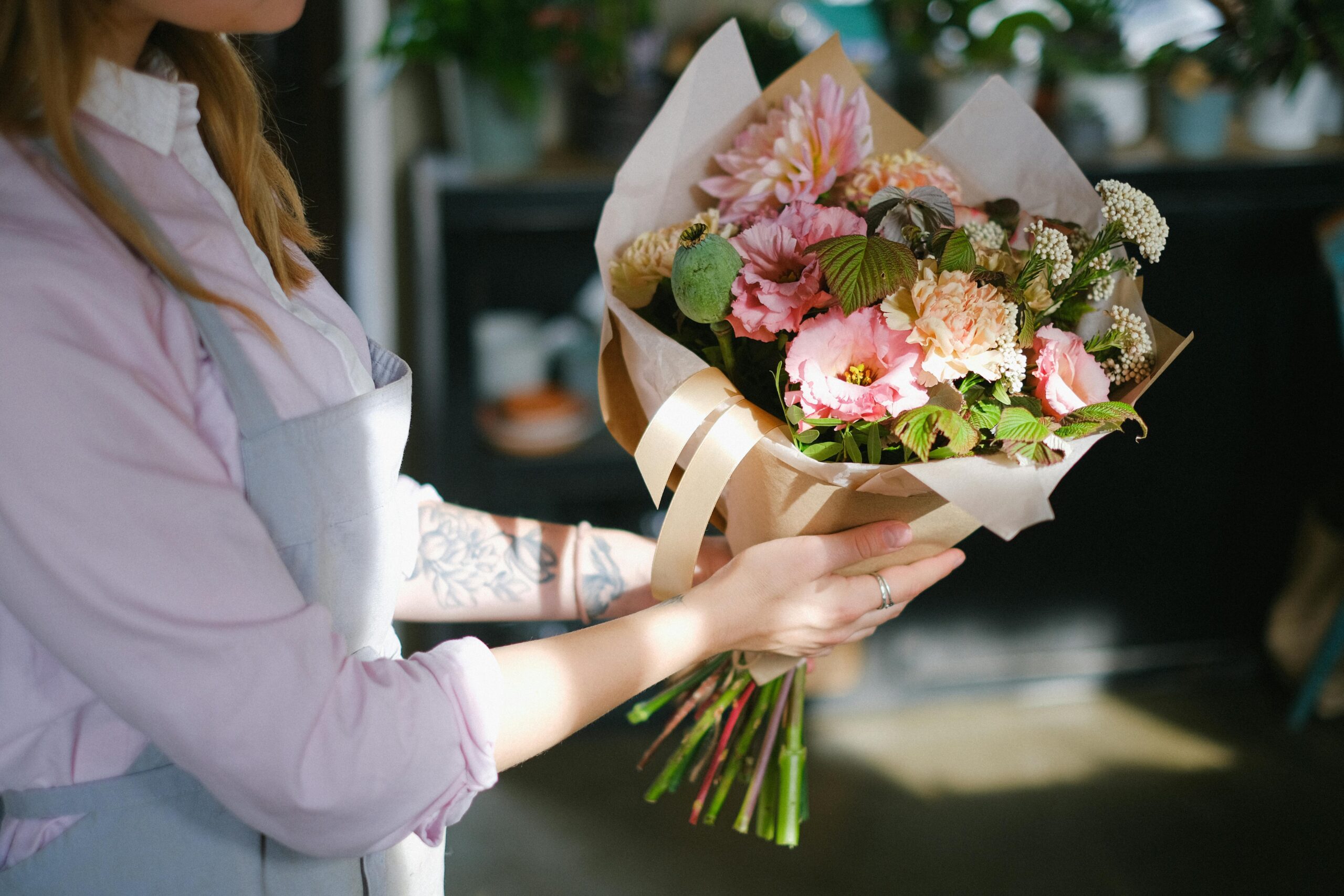Flower packaging is more than a protective layer—it is an art form that enhances the beauty of each bouquet, creates emotional resonance, and reflects cultural aesthetics. For florists and gift-givers in Europe and the United States, choosing the right packaging materials can elevate a simple arrangement into a memorable gift. This article explores the balance between aesthetics and practicality in floral packaging, offering guidance on material selection, design trends, and useful wrapping techniques.
Why Flower Packaging Matters
When presenting flowers, first impressions are everything. A bouquet wrapped in thoughtfully chosen paper and finished with an elegant ribbon conveys not only beauty but also sentiment. Customers increasingly expect packaging that combines elegance with practicality, ensuring flowers stay fresh and protected while looking stunning.
High-quality bouquet paper provides structure and enhances presentation, while gift ribbon adds the final touch of grace. Together, these elements create an experience that delights both giver and receiver.
Balancing Aesthetics and Function
The best floral packaging strikes harmony between design and durability. Aesthetic choices should never compromise functionality, especially when flowers need to survive long transport or varying climates. Waterproof wrapping options such as waterproof wrapping paper ensure bouquets maintain their shape and freshness even in unpredictable weather.
For example, florists in northern Europe often choose robust, insulated wraps during colder months, while U.S. florists in coastal areas prioritize waterproof paper for humid environments.
Popular Flower Packaging Materials
-
Bouquet Paper
Available in matte, kraft, and specialty finishes, bouquet paper is versatile and timeless. Matte paper suits minimalist arrangements, while kraft paper appeals to eco-conscious customers. Specialty papers, including metallic or textured designs, are perfect for luxury gifting. -
Cellophane and Transparent Wraps
Widely used in supermarkets and commercial florists, transparent wraps protect flowers while showcasing their natural beauty. Modern cellophane options are biodegradable, meeting the rising demand for sustainability. -
Fabric Wraps
Cotton, jute, and linen wraps offer a rustic, artisanal feel. They are often reusable, aligning with eco-friendly values popular across Western markets. -
Ribbons and Accessories
Gift ribbon completes the bouquet with elegance. Satin, organza, and grosgrain ribbons each bring distinct textures and personalities to the wrapping. Accessories such as small tags or branded stickers enhance storytelling and brand recognition.
Current Trends in Flower Packaging
-
Sustainability: Eco-friendly wraps and biodegradable materials are now industry standards. Florists are moving away from plastic-heavy designs and embracing recyclable paper and fabric.
-
Minimalist Design: Clean lines, muted colors, and natural finishes are favored by modern customers who value understated elegance.
-
Cultural Influence: European florists often integrate cultural elements, such as soft pastel wraps for spring celebrations. In the U.S., bold colors dominate festive occasions like Valentine’s Day or Mother’s Day.
-
Personalization: Customized prints, brand logos, and handwritten notes are increasingly important in delivering a unique customer experience.
(For additional trend insights, see Interflora’s guide on floral design and FloraQueen’s packaging inspiration.)
Practical Tips for Florists and Gift-Givers
-
Match Packaging to Occasion
-
Weddings: Use luxury bouquet paper with metallic accents and satin ribbons.
-
Corporate Gifts: Choose sleek, neutral tones with minimalist wrapping.
-
Everyday Bouquets: Simple kraft paper and cotton ribbon for a casual, natural look.
-
-
Prioritize Freshness
Always use waterproof layers when flowers will be transported over long distances. This keeps stems hydrated and ensures the bouquet arrives in perfect condition. -
Tell a Story with Design
Packaging is part of your brand identity. Whether rustic, luxurious, or modern, ensure your design communicates a consistent message that customers remember. -
Train Your Staff
For florists, packaging techniques matter. A well-folded corner or carefully tied bow can make the difference between ordinary and exceptional presentation.
The Emotional Value of Bouquet Packaging
Beyond functionality, bouquet packaging plays an emotional role. In many cultures, the wrapping symbolizes care and respect. A thoughtfully wrapped bouquet feels more personal and intentional, strengthening the emotional impact of the gift. For florists serving European and American markets, this emotional connection is crucial in customer retention and brand loyalty.
Conclusion
Flower packaging is both an art and a science, combining aesthetic appeal with practical function. By choosing high-quality bouquet paper, adding elegant gift ribbon, and adopting sustainable materials, florists can meet modern customer expectations. With thoughtful design, packaging transforms a bouquet into an unforgettable gift—one that carries beauty, meaning, and care.

